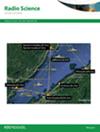Breast cancer detection based on simplified deep learning technique with histopathological image using BreaKHis database
IF 1.6
4区 地球科学
Q3 ASTRONOMY & ASTROPHYSICS
引用次数: 0
Abstract
Presented here are the results of an investigation conducted to determine the effectiveness of deep learning (DL)-based systems utilizing the power of transfer learning for detecting breast cancer in histopathological images. It is shown that DL models that are not specifically developed for breast cancer detection can be trained using transfer learning to effectively detect breast cancer in histopathological images. The outcome of the analysis enables the selection of the best DL architecture for detecting cancer with high accuracy. This should facilitate pathologists to achieve early diagnoses of breast cancer and administer appropriate treatment to the patient. The experimental work here used the BreaKHis database consisting of 7909 histopathological pictures from 82 clinical breast cancer patients. The strategy presented for DL training uses various image processing techniques for extracting various feature patterns. This is followed by applying transfer learning techniques in the deep convolutional networks like ResNet, ResNeXt, SENet, Dual Path Net, DenseNet, NASNet, and Wide ResNet. Comparison with recent literature shows that ResNext-50, ResNext-101, DPN131, DenseNet-169 and NASNet-A provide an accuracy of 99.8%, 99.5%, 99.675%, 99.725%, and 99.4%, respectively, and outperform previous studies.使用 BreaKHis 数据库,基于组织病理学图像的简化深度学习技术检测乳腺癌
本文介绍了一项调查的结果,该调查旨在确定基于深度学习(DL)的系统利用迁移学习的力量检测组织病理学图像中乳腺癌的有效性。研究表明,并非专门为乳腺癌检测而开发的深度学习模型可以通过迁移学习进行训练,从而有效检测组织病理学图像中的乳腺癌。分析结果有助于选择最佳的 DL 架构,以高精度检测癌症。这将有助于病理学家实现乳腺癌的早期诊断,并对患者进行适当的治疗。实验工作使用了 BreaKHis 数据库,该数据库由来自 82 名临床乳腺癌患者的 7909 张组织病理学图片组成。提出的 DL 训练策略使用了各种图像处理技术来提取各种特征模式。然后在 ResNet、ResNeXt、SENet、Dual Path Net、DenseNet、NASNet 和 Wide ResNet 等深度卷积网络中应用迁移学习技术。与最近的文献比较显示,ResNext-50、ResNext-101、DPN131、DenseNet-169 和 NASNet-A 的准确率分别为 99.8%、99.5%、99.675%、99.725% 和 99.4%,优于之前的研究。
本文章由计算机程序翻译,如有差异,请以英文原文为准。
求助全文
约1分钟内获得全文
求助全文
来源期刊

Radio Science
工程技术-地球化学与地球物理
CiteScore
3.30
自引率
12.50%
发文量
112
审稿时长
1 months
期刊介绍:
Radio Science (RDS) publishes original scientific contributions on radio-frequency electromagnetic-propagation and its applications. Contributions covering measurement, modelling, prediction and forecasting techniques pertinent to fields and waves - including antennas, signals and systems, the terrestrial and space environment and radio propagation problems in radio astronomy - are welcome. Contributions may address propagation through, interaction with, and remote sensing of structures, geophysical media, plasmas, and materials, as well as the application of radio frequency electromagnetic techniques to remote sensing of the Earth and other bodies in the solar system.
 求助内容:
求助内容: 应助结果提醒方式:
应助结果提醒方式:


